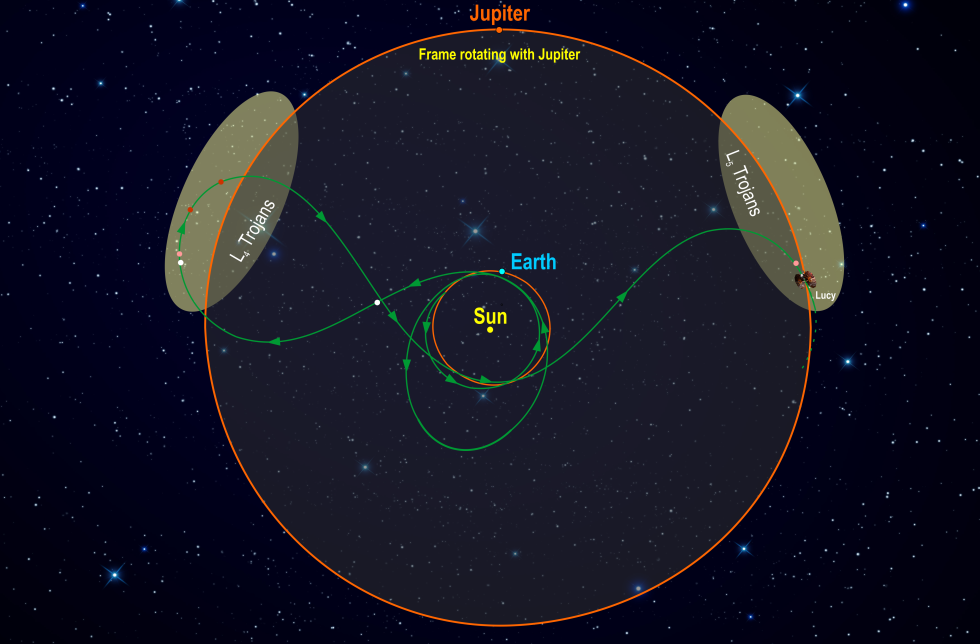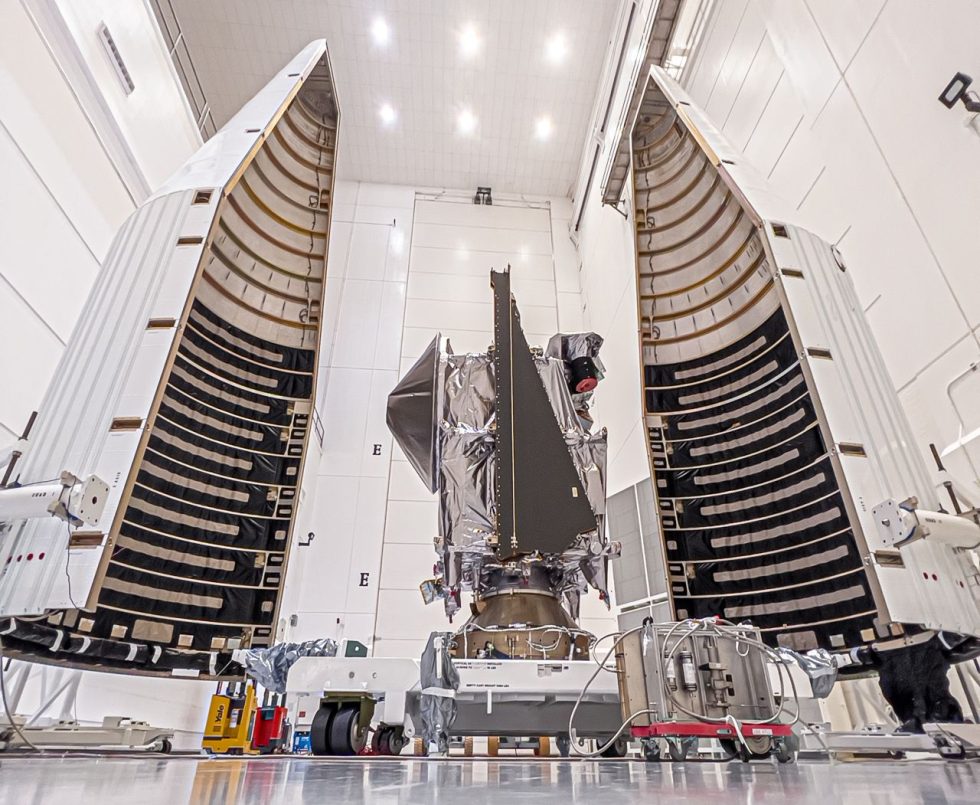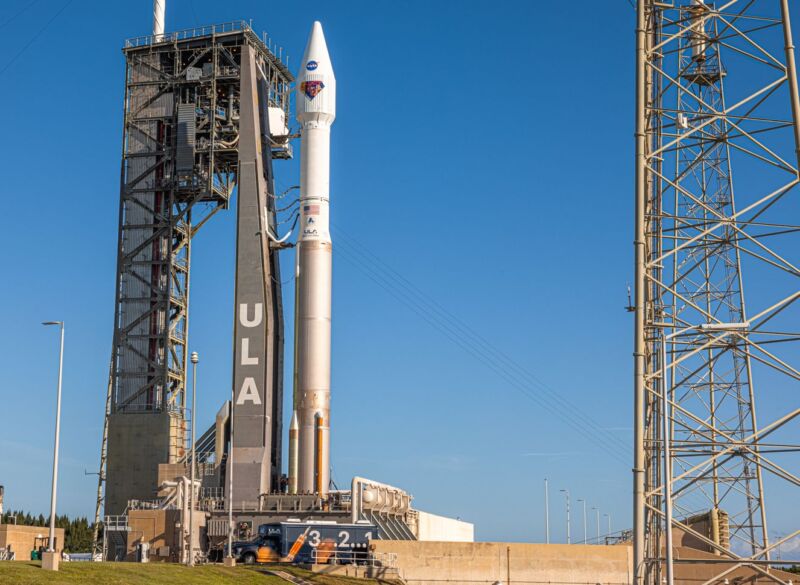Less than five years have gone by since NASA selected the "Lucy" mission for development as part of its Discovery Mission program, and now the intriguing spacecraft is ready for launch.
The $981 million mission will fly an extremely complex trajectory over the span of a dozen years. The spacecraft will swing by Earth a total of three times for gravitational assists as it visits a main-belt asteroid, 52246 Donaldjohanson, and subsequently flies by eight Trojan asteroids that share Jupiter's orbit around the Sun.
The Lucy mission is scheduled to launch on Saturday at 5:34 am ET (09:34 UTC) from Cape Canaveral Space Force Station in Florida. An Atlas V rocket carrying the 1.5-ton spacecraft rolled to the launch pad on Thursday in advance of the launch attempt. The weather looks fine Saturday morning, with a 90 percent chance of favorable conditions. The launch will be covered live on NASA TV.
Lucy will fly by its first asteroid target in April 2025, a main-belt asteroid named after Donald Johanson, the American anthropologist who co-discovered the famed "Lucy" fossil in 1974. The fossil, of a female hominin species that lived about 3.2 million years ago, supported the evolutionary idea that bipedalism preceded an increase in brain size.

The Lucy asteroid mission, in turn, takes its name from the famed fossil. By visiting Trojan asteroids, scientists expect to glean information about the building blocks of the Solar System and better understand the nature of its planets today.
No probe has flown by these smallish Trojan asteroids, which are clustered at stable LaGrange points trailing and ahead of Jupiter's orbit 5.2 astronomical units from the Sun. The asteroids are mostly dark but may be covered with tholins, which are organic compounds that could provide raw materials for the basic chemicals of life.
"When we look at nature, whether it's looking at deep space or at these small objects, each one of these tells us a chapter of the story that we're all a part of," said NASA's science chief, Thomas Zurbuchen, during a media briefing this week in advance of the launch. "When you look at one of those planetary bodies and you add science, it turns into a history book."
So in some sense, the Lucy asteroid mission will be looking at fossil remnants of our early Solar System. To accomplish all of these fly-bys in a single mission, scientists and engineers this year devised a complex orbital track, which necessitated a launch this month.
This gave mission planners a short deadline to complete the Lucy project after NASA selected it in January 2017. Since that time, planners experienced a government shutdown, the COVID-19 pandemic, and supply chain issues. Through it all, NASA and the spacecraft's manufacturer, Lockheed Martin, have remained on schedule and within the mission's budget.

According to Donya Douglas-Bradshaw, Lucy project manager at NASA’s Goddard Space Flight Center in Greenbelt, Maryland, the pandemic struck during a critical time period when the spacecraft was assembled with its four major scientific payloads. It took about 14 months to integrate the spacecraft bus with the instruments and verify that the craft could survive for a full 12-year mission in space. If Lucy is successful, the mission will travel farther on solar power than any previous spacecraft.
"I think the largest challenge in doing that certainly had to do with the pandemic," she said. "Obviously, when you're building hardware and integrating and testing it, there's a lot of hands-on, and so it was particularly challenging to build it and maintain the safety of the workforce."
But now, the spacecraft is buttoned up, and the rocket is ready to go. Somewhat ironically, although Lucy is visiting the "Jupiter trojans," it will never be closer to Jupiter than when it is on Earth. This is because the Trojans trail Jupiter at a greater distance than the distance that lies between Earth and the Solar System's largest planet.



3175x175(CURRENT).thumb.jpg.b05acc060982b36f5891ba728e6d953c.jpg)

Recommended Comments
There are no comments to display.
Join the conversation
You can post now and register later. If you have an account, sign in now to post with your account.
Note: Your post will require moderator approval before it will be visible.